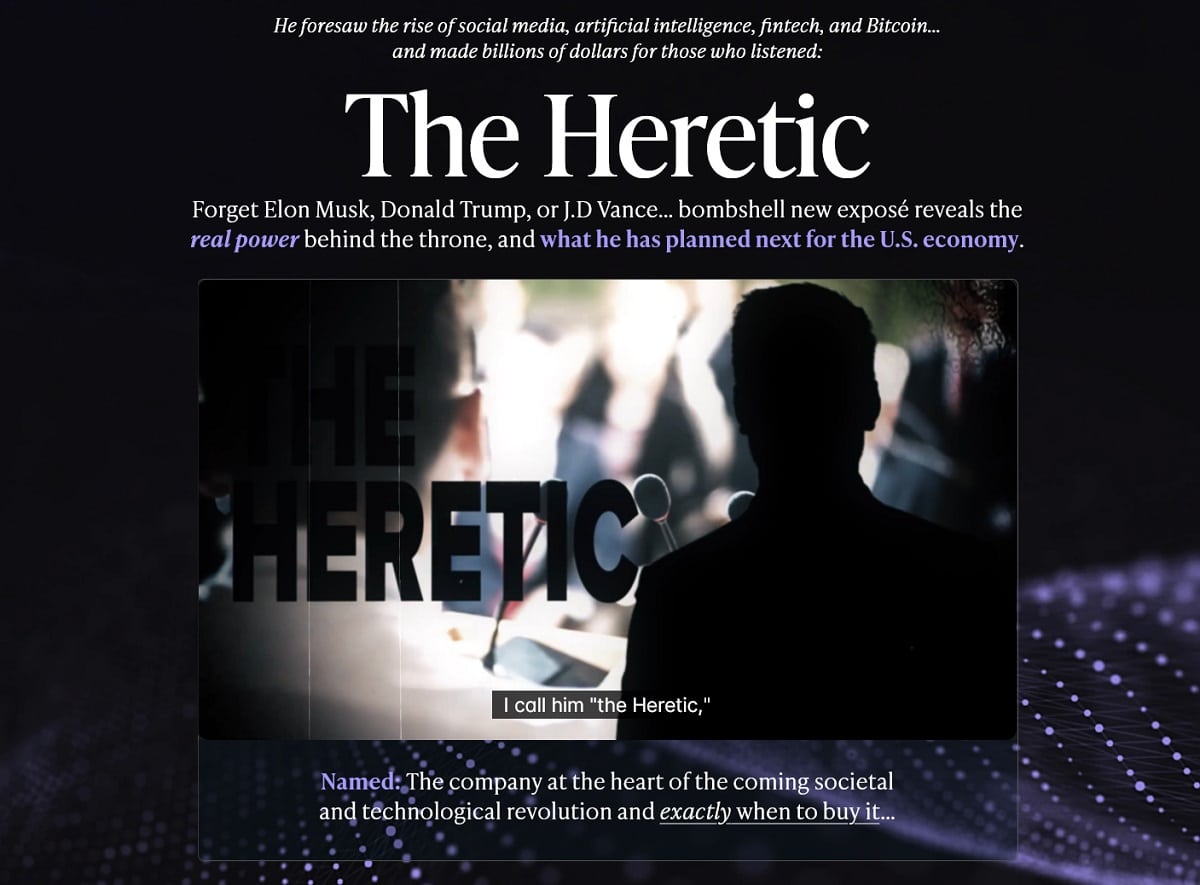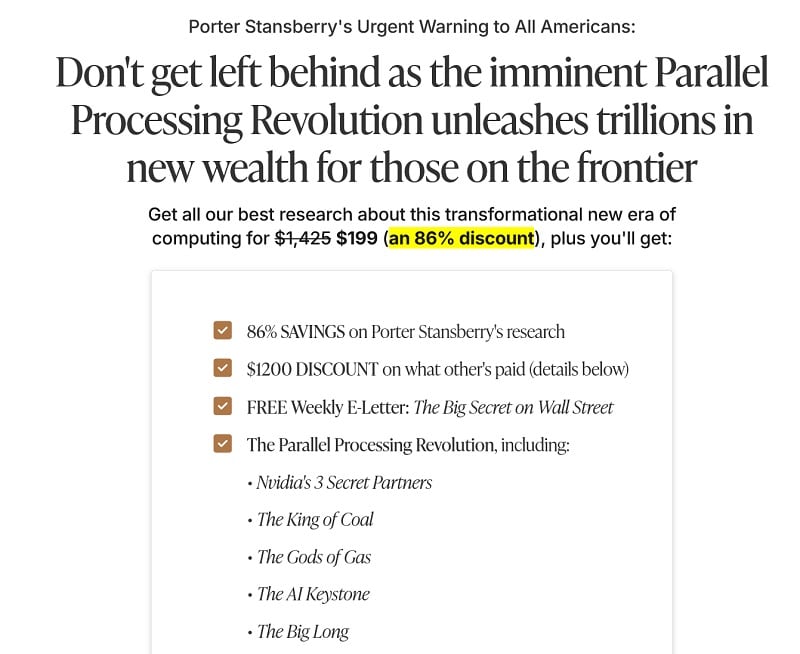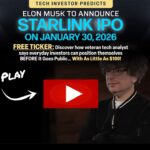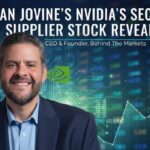Explore Peter Thiel’s influence on tech, politics, and finance, and how his parallel processing vision could reshape America’s future.
The Shadow Architect
In the intricate web of American power, one figure stands out, not for his visibility, but for his profound influence from the shadows. Dubbed “the Heretic,” Peter Thiel is a name that may not resonate with the average American, yet his impact reverberates across finance, technology, politics, and culture. Unlike traditional power brokers, Thiel operates discreetly, orchestrating moves that have shaped the modern world for nearly two decades.
Below, I’ll go into Thiel’s unparalleled foresight, his controversial predictions, and his pivotal role in the parallel processing revolution—a technological paradigm shift poised to redefine society.
The Heretic’s Influence: A Network of Power
Peter Thiel’s influence is not confined to a single domain; it spans a vast network of industries and individuals. From Silicon Valley titans like Elon Musk, Mark Zuckerberg, and Marc Andreessen to political figures like Donald Trump and JD Vance, Thiel’s vision has guided some of the most prominent names in America. His ability to anticipate technological and societal shifts has earned him a unique position as a trusted advisor to those shaping the future.
- Technology: Thiel foresaw the rise of cryptocurrencies, social media, cloud computing, and artificial intelligence, often years before they became mainstream.
- Politics: He played a central role in transforming the Republican Party, influencing Trump’s 2016 victory and JD Vance’s vice-presidential ascent.
- Finance: His predictions have enabled early investors to amass fortunes, from Bitcoin’s surge to the transformation of the financial industry.
“He’s not a politician, yet he moves chess pieces in secret, shaping every aspect of our world.”—Porter Stansberry
Heretical Predictions: Seeing the Unseen
Thiel’s moniker, “the Heretic,” stems from his contrarian predictions that challenge prevailing orthodoxy. His foresight has consistently proven accurate, earning him both admiration and criticism. Some of his most notable predictions include:
- Technological Revolutions: Thiel anticipated the rise of digital commerce, social media, big data, and AI, positioning himself and his allies at the forefront of these trends.
- Societal Shifts: He warned that left-wing ideals like DEI and multiculturalism could undermine American stability, predicting the rise of “woke” as a quasi-religion and the Deep State’s growing authoritarianism.
- Economic Warnings: Thiel has cautioned against the tech market’s current bubble, predicting a crash driven by overvalued stocks, inflation, and global instability.
Despite facing brutal attacks for his views, Thiel’s track record is undeniable. His ability to “see around the corner” has made him a pivotal figure in anticipating and shaping the future.
The Parallel Processing Revolution: A New Era
At the heart of Thiel’s current vision lies the parallel processing revolution, a technological leap that promises to transform every facet of society. Unlike serial processing, which executes tasks sequentially, parallel processing—powered by graphical processing units (GPUs)—handles millions of operations simultaneously. This breakthrough, catalyzed by the 2012 AlexNet algorithm, has unlocked unprecedented computing power, enabling advancements in AI, cryptocurrencies, autonomous vehicles, and more.
Key Impacts of Parallel Processing:
- Artificial Intelligence: Powers platforms like ChatGPT and self-driving car algorithms.
- Healthcare: Accelerates drug discovery and biotech innovations.
- Finance: Drives predictive analytics for Wall Street and global markets.
- Defense: Enhances military intelligence through companies like Palantir.
Thiel’s conviction in parallel processing’s potential led him to found Palantir, a company that leverages this technology for data analysis, serving clients from the Pentagon to Fortune 500 firms.
Nvidia: The Titan of Parallel Processing
Central to the parallel processing revolution is Nvidia, a company that dominates the GPU market with an 80% share. Nvidia’s control extends beyond chip design to the CUDA programming platform and high-speed connectivity through its acquisition of Mellanox. This trifecta grants Nvidia a near-monopoly, making it indispensable to tech giants like Amazon, Microsoft, and Tesla.
However, Thiel and financial analyst Porter Stansberry warn against investing in Nvidia at its current valuations. Trading at 45 times revenues and 218 times earnings, Nvidia’s stock is priced for perfection, a setup reminiscent of past tech bubbles. Stansberry predicts a potential crash, citing historical precedents like the Dotcom bust and the 2021 crypto mania, which saw Nvidia’s stock plummet.
“Buying Nvidia at today’s prices could lead to losses of 50% or more.”—Porter Stansberry
Instead, Stansberry advocates waiting for a market correction, when Nvidia could be purchased at 15–20 times earnings, offering a safer entry point for investors.
Nvidia’s Secret Partners: The Unsung Heroes
While Nvidia dominates the spotlight, three lesser-known companies play critical roles in its ecosystem, offering compelling investment opportunities:
- Partner 1: Chip Manufacturing—This company owns the only machines capable of producing sub-10-nanometer chips, essential for Nvidia’s GPUs. It has compounded revenues at 17% annually and is poised for continued growth.
- Partner 2: Resource Monopoly—Dubbed the “new OPEC,” this firm controls 90% of a critical GPU manufacturing resource, boasting 40% net income margins.
- Partner 3: Intellectual Property—This company designs GPU and CPU blueprints, generating $3 billion in revenue with minimal capital expenditure.
These companies, though obscure, are integral to the parallel processing ecosystem and offer significant upside potential for investors.
The Energy Crisis: Powering the Revolution
The parallel processing revolution’s exponential computing power comes with equally massive energy demands. A single GPU-based data center consumes enough electricity to power 50,000 homes, and with 600 data centers converting to GPUs, the energy crunch is imminent.
Stansberry estimates that new data centers will consume 10% of U.S. electricity within five years, a demand renewables cannot meet.
Investment Opportunities in Energy:
- King of Coal: This company has capitalized on rising coal prices, consolidating mines and achieving a 30% free cash flow margin. It has delivered 364% returns since 2017 and remains undervalued.
- Gods of Gas: An independent oil and gas firm that acquired Marcellus Shale assets at a fraction of their value. With natural gas demand soaring, this company could reach a $100 billion valuation.
- Keystone (Nuclear): A leader in small modular reactors (SMRs), this company offers a clean, scalable solution to meet future energy needs, backed by billions from investors like Jeff Bezos and Bill Gates.
The energy sector, long neglected due to anti-fossil fuel policies, is poised for a renaissance, offering investors a chance to capitalize on historically low valuations.
Infrastructure Overhaul: A Multi-Trillion-Dollar Opportunity
To fully harness parallel processing, America’s infrastructure—data centers, telecommunications, power grids, and more—requires a massive overhaul. Estimated at hundreds of billions, this investment is already underway, with contributions from Wall Street, tech giants, and the federal government. This CapEx boom will drive growth in sectors like construction, manufacturing, and telecommunications, creating additional investment opportunities.
The infrastructure buildout is projected to exceed $1 trillion in the next five years, fueling economic growth and innovation.
How to Invest in These Opportunities: The Big Secret on Wall Street
To capitalize on the parallel processing revolution and its associated opportunities, investors need detailed, actionable insights. Porter Stansberry, through his financial advisory firm Porter and Company, offers a comprehensive resource: The Big Secret on Wall Street. This flagship newsletter provides in-depth analysis and specific investment recommendations, including the companies poised to benefit from this technological shift.
Why Subscribe to The Big Secret on Wall Street?
- Exclusive Briefing: Subscribers gain access to “The Parallel Processing Revolution,” a detailed report covering Nvidia, its three secret partners, the King of Coal, the Gods of Gas, and the Keystone SMR company. This report includes buy and sell recommendations and optimal entry points to maximize returns.
- Weekly Insights: Receive weekly emails with redacted versions of The Big Secret on Wall Street, offering analysis of overlooked market factors and emerging trends.
- Bonus Content: New subscribers receive a complimentary briefing on an additional company critical to data center operations, enhancing portfolio diversification.
- Proven Track Record: Stansberry’s past predictions, from the 2008 financial crisis to the rise of Bitcoin, have delivered significant returns for followers.
Special Offer: Typically priced at $1,425 annually, Stansberry is offering the “The Parallel Processing Revolution” briefing for a one-time payment of $199—a discount of over $1,200. This includes the full report, bonus content, and complimentary access to weekly newsletters, with no ongoing fees.
How to Get Started:
- Visit the secure subscription page via the link provided by Porter and Company here.
- Review the offer details, including bonus content and subscription benefits.
- Complete the one-time payment of $199 to access the briefing and additional resources.
- For questions, contact Porter and Company’s team directly for personalized assistance.
“This report alone would be worth the price of a subscription.”—Dan Denning, Financial Analyst
By subscribing to The Big Secret on Wall Street, investors can navigate the complexities of the parallel processing revolution, positioning themselves for potentially life-changing returns while avoiding the pitfalls of an overheated tech market.
Despite the promise of parallel processing, the current tech market is in a precarious bubble, driven by excessive credit and overvalued stocks. Stansberry warns of a potential crash that could erase trillions in wealth, particularly impacting companies like Nvidia, Tesla, and Apple. However, this volatility presents opportunities for savvy investors who wait for the right moment to buy.
Thiel’s long-term optimism about parallel processing and AI underscores the potential for transformative wealth creation. By focusing on undervalued sectors like energy and infrastructure, and leveraging resources like The Big Secret on Wall Street, investors can mitigate risks while positioning themselves for significant returns.
Conclusion: The Heretic’s Legacy
Peter Thiel, the Heretic, has spent decades shaping the world through his prescient vision and strategic influence. From pioneering tech trends to reshaping political landscapes, his impact is profound yet often unseen. The parallel processing revolution, his latest focus, promises to redefine society, creating unprecedented opportunities for those who heed his warnings and insights.
As America stands on the cusp of a technological and economic transformation, the choice is clear: embrace the Heretic’s vision or risk being left behind. By investing in the companies and sectors driving this revolution—guided by resources like The Big Secret on Wall Street—individuals can secure their financial future in an era of unparalleled change.
FAQ: Understanding Peter Thiel and the Parallel Processing Revolution
Who is Peter Thiel, and why is he called “the Heretic”?
Peter Thiel is a billionaire entrepreneur, investor, and co-founder of companies like PayPal and Palantir. He’s dubbed “the Heretic” due to his contrarian predictions that challenge mainstream views, such as the rise of cryptocurrencies, AI, and societal shifts like the impact of “woke” ideology. His foresight, often initially criticized, has consistently proven accurate, shaping technology, politics, and finance.
What is the parallel processing revolution?
The parallel processing revolution refers to a technological shift from serial processing (executing tasks sequentially) to parallel processing, where graphical processing units (GPUs) handle millions of operations simultaneously. Catalyzed by the 2012 AlexNet algorithm, it powers advancements in AI, cryptocurrencies, autonomous vehicles, and more, transforming industries like healthcare, finance, and defense.
How has Peter Thiel influenced the parallel processing revolution?
Thiel recognized the potential of parallel processing early, founding Palantir, which uses this technology for advanced data analysis. His investments and strategic guidance have positioned companies and individuals to capitalize on this revolution, and he’s now betting on its transformative impact across society, particularly through technologies like AI and data analytics.
Why is Nvidia central to the parallel processing revolution?
Nvidia dominates the GPU market with an 80% share, designs the industry-standard CUDA programming platform, and owns high-speed connectivity through its acquisition of Mellanox. This gives Nvidia a near-monopoly, making it essential for tech giants like Amazon and Tesla, though its current high valuations pose investment risks.
What are the investment risks associated with the parallel processing revolution?
The tech market, including Nvidia, is in a bubble with overvalued stocks (e.g., Nvidia at 45 times revenues). Analyst Porter Stansberry warns of a potential crash due to inflation, global instability, and excessive credit, which could lead to losses of 50% or more for investors buying at peak prices.
What are Nvidia’s “secret partners,” and why are they important?
Nvidia’s three secret partners are critical to its ecosystem:
- Partner 1: Owns machines for manufacturing sub-10-nanometer GPU chips, with 17% annual revenue growth.
- Partner 2: Controls 90% of a key GPU resource, earning 40% net income margins.
- Partner 3: Designs GPU/CPU blueprints, generating $3 billion in revenue with minimal capital expenditure. These companies offer compelling investment opportunities due to their integral roles and lower visibility.
How does the energy crisis relate to parallel processing?
Parallel processing requires massive energy, with GPU data centers consuming electricity equivalent to 50,000 homes each. With 600 data centers converting and 400 new ones planned, they’ll use 10% of U.S. electricity in five years. Renewables can’t meet this demand, driving reliance on coal, natural gas, and nuclear energy.
What energy investment opportunities are tied to this revolution?
- King of Coal: A coal company with 30% free cash flow margins, benefiting from rising coal prices and delivering 364% returns since 2017.
- Gods of Gas: A natural gas firm dominating the Marcellus Shale, poised for a $100 billion valuation as gas prices rise.
- Keystone: A leader in small modular reactors (SMRs), offering clean, scalable nuclear energy, backed by investors like Jeff Bezos and Bill Gates.
What is “The Big Secret on Wall Street,” and how can it help investors?
“The Big Secret on Wall Street” is Porter Stansberry’s flagship financial newsletter from Porter and Company. It provides detailed investment analysis, including the “The Parallel Processing Revolution” briefing, which covers Nvidia, its secret partners, and energy companies. Subscribers receive specific buy/sell recommendations, weekly market insights, and bonus content to navigate this opportunity.
How can I subscribe to “The Big Secret on Wall Street”?
For a one-time payment of $199 (a $1,225 discount from the usual $1,425 annual fee), you can access the “The Parallel Processing Revolution” briefing, weekly newsletters, and a bonus report on a key data center company. Visit the secure subscription page provided by Porter and Company or contact their team for assistance.
Why is now a critical time to invest in the parallel processing revolution?
The revolution is poised to transform society, creating trillions in wealth, but the current tech bubble poses risks. By subscribing to “The Big Secret on Wall Street,” investors can access expert guidance to buy at optimal prices, avoiding losses and capitalizing on undervalued sectors like energy and infrastructure.
What infrastructure investments are linked to this revolution?
The revolution requires a $1 trillion+ infrastructure overhaul, including data centers, telecommunications, and power grids. Investments from Wall Street, tech giants, and the government are driving this CapEx boom, creating opportunities in construction, manufacturing, and telecom sectors.
How does Peter Thiel’s political influence relate to this revolution?
Thiel reshaped the Republican Party, influenced Trump’s 2016 victory, and supported JD Vance’s vice-presidential rise. His political moves align with his vision to counter societal trends like DEI and Deep State authoritarianism, creating a favorable environment for tech and energy investments.
What happens if I miss this investment opportunity?
Those who ignore the parallel processing revolution risk being “impoverished by the sweeping changes,” as Stansberry warns. Without understanding and investing in key companies, individuals may miss out on significant wealth creation, similar to missing the internet or personal computing booms.
Can I contact Porter and Company for more information?
Yes, you can call Porter and Company’s offices directly. Their team is available to answer questions about the subscription offer, the “The Parallel Processing Revolution” briefing, or any other details related to the investment opportunities.


































